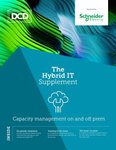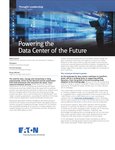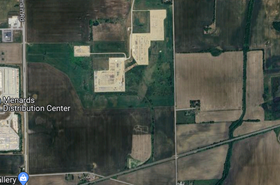As enterprise data grows in size, scale, and complexity, businesses face a crucial question: Which data should move to the cloud, and which data should remain on-site?
The answer is nuanced. Business leaders must consider several factors — including security, scalability, and potential cost savings — when determining the best data management practices for their organization’s needs and capabilities.
Companies that lack cohesive, connected data practices can cut off on-premises data from cloud environments — losing out on the benefits and opportunities that hybrid environments offer. Unfortunately, that’s the case for many organizations. Nearly half of businesses say having additional data has not resulted in additional value. One reason? Entrenched data silos between cloud and physical servers.
Although the unique blend and balance of cloud and on-premises systems will look different across organizations, one thing is true for nearly every organization: A data strategy that unifies on-premises and cloud data to future-proof operations for growth is a must.
Gaining more from data in the hybrid cloud
Today, more than 90 percent of enterprises rely on an infrastructure that combines cloud and bare metal systems. This hybrid approach helps organizations take advantage of the speed and agility of the cloud, and the security and predictability of on-premises systems.
However, there are also challenges. In particular, many organizations struggle to connect data between their physical and cloud-based data sources. In fact, many business leaders report that data silos are a major barrier to capturing, analyzing, and acting on data. Breaking out of data silos requires a robust hybrid data strategy that’s aligned with your organization’s technology infrastructure and business goals. While the specific digital solutions may differ based on your organization and its needs, three hallmarks signal a move in the right direction:
Provide universal connectivity
The average company relies on hundreds of data sources to inform daily operations. Whether you're syncing data from SQL Server to Snowflake or from a data warehouse to Salesforce, you need to bridge disparate data sources and streamline accessibility across various environments. A healthcare organization, for example, will need to traverse its internal firewalls to securely access patient data from its on-premises system to use in cloud applications.
There are an increasing number of digital tools and technologies that facilitate data connectivity between various environments. However, not all solutions are created equal. In considering a solution, aim for one that provides versatility, flexibility, and the greatest breadth and depth of connection possible. The ultimate goal is universal connectivity that enables employees to access, share, and use data no matter where it is stored.
Ensure uniform structure
Enterprise data not only originates in different locations, but it also comes in myriad structures, schemas, and formats. It’s not enough to provide access to data; you also need to ensure ease of use by managing, simplifying, and standardizing your data into a single, unified structure.
Invest in data tools and technology infrastructure that support diverse data formats to transform them into a uniform format without heavy IT involvement. By creating a common data format, you enable your teams to easily report, view, and analyze data consistently across every environment without waiting for a technical expert to respond to an IT ticket.
Standardize security
Companies should have secure data storage best practices in place. However, many security lapses occur during data migration. Data in transit is subject to losing crucial security protocols and access controls when being moved from on-site servers to the cloud and vice versa.
Implementing standardized, stringent security measures—including encryption and access controls—can help protect data, regardless of its location and movement. Investing in robust monitoring and auditing tools will ensure you can promptly detect and respond to security threats. Likewise, you should prioritize continual improvements to not only comply with but exceed industry-specific security regulations and certifications, such as SOC 2 and ISO compliance.
The hybrid cloud era has ushered in new possibilities and advantages for organizations to access, analyze, and utilize actionable insights and data-driven decisions. However, unlocking the full potential of the hybrid cloud requires the right technology, tools, and data practices to connect and integrate data across both environments.
By simplifying, streamlining, and strengthening data connectivity, your organization can bridge the digital divide between on-premises and cloud systems, and optimize both environments to work in conjunction toward long-term growth.








